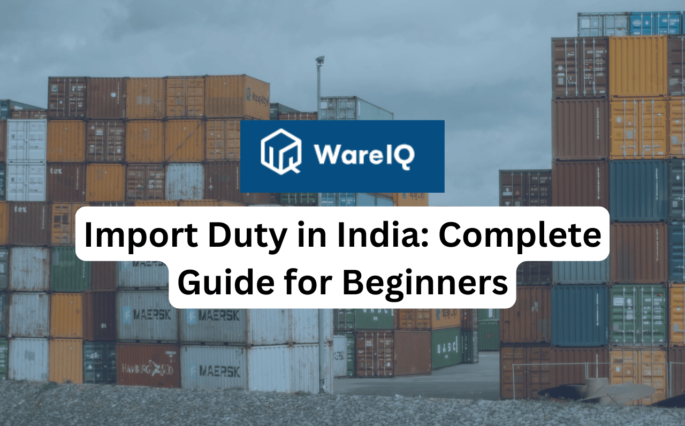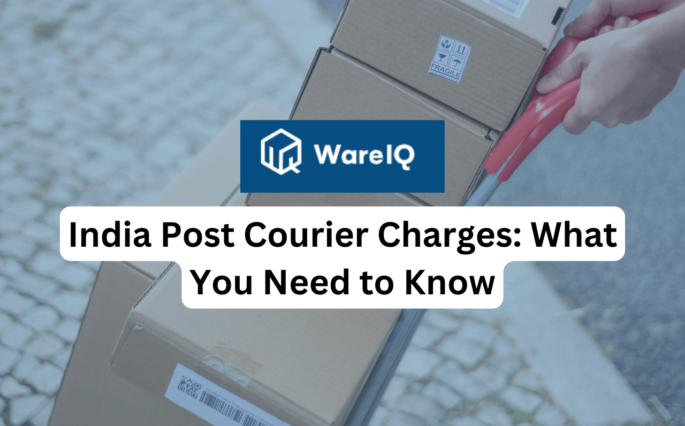Top E-commerce Marketplaces to Launch Your Brand in India: Your Guide to Going Live


The surge in digital connectivity and the evolution of consumer behaviour in India have propelled e-commerce marketplaces to the forefront of the retail revolution. This comprehensive guide on top e-commerce marketplaces is tailored for brands aspiring to penetrate the Indian market, offering insights into leveraging e-commerce marketplaces as a strategic avenue for growth.
E-commerce marketplaces in India present a unique opportunity for international and domestic brands to access a vast and diverse consumer base. With India’s e-commerce sector on a trajectory of exponential growth, fueled by technological advancements and changing consumer preferences, these platforms offer unparalleled reach and scalability. However, navigating the complexities of marketplace models, understanding the future trends in online commerce, and devising effective strategies for launching on these platforms require a nuanced understanding of the Indian e-commerce ecosystem.
This article aims to demystify the concept of e-commerce marketplaces, explore the marketplace model of e-commerce, predict future trends in the online marketplace, and provide actionable strategies for brands looking to launch or expand their presence in India’s vibrant online retail landscape.
- E-commerce Marketplaces and Its Concept
- Demystifying the Marketplace Model of E-commerce
- The Future of Online E-commerce Marketplace
- The Strategies for E-commerce to Launch on Marketplaces
- 1. Comprehensive Market Research
- 2. Optimise Product Listings
- 3. Competitive Pricing Strategy
- 4. Leverage Marketplace Marketing Tools
- 5. Focus on Customer Reviews and Ratings
- 6. Localise Your Approach
- 7. Invest in Logistics and Fulfillment
- 8. Build a Multichannel Strategy
- 9. Monitor Performance and Gather Insights
- 10. Compliance and Legal Considerations
- Conclusion
- FAQs About E-commerce Marketplaces
- What are the key factors to consider before launching on an e-commerce marketplace in India?
- What are the key factors to consider before launching on an e-commerce marketplace in India?
- How important is localisation for success in Indian e-commerce marketplaces?
- Can international brands sell directly on Indian e-commerce marketplaces?
- What role do customer reviews play in the success of a product on e-commerce marketplaces?
- How can brands manage logistics and fulfilment effectively on Indian e-commerce marketplaces?
- What marketing strategies work best for promoting products on e-commerce marketplaces in India?
- How frequently should brands analyse their marketplace performance and adjust their strategies?
E-commerce Marketplaces and Its Concept
E-commerce marketplaces are dynamic online platforms where multiple vendors can list and sell their products or services to a broad audience. This concept revolutionises traditional retail by aggregating diverse offerings from various sellers under one digital roof, providing consumers with a one-stop shopping experience. Unlike direct-to-consumer (DTC) websites, which are operated by single brands, e-commerce marketplaces host an array of merchants, ranging from global brands to local artisans, thereby enriching consumer choice and comparison shopping.
The core appeal of e-commerce marketplaces lies in their convenience and efficiency. Customers can browse a wide selection of products, compare prices, read reviews, and make purchases, all within a single platform. For sellers, these marketplaces offer access to a more extensive customer base than they could likely reach on their own, along with the benefit of reduced marketing costs and logistical support in some cases.
Marketplaces operate on various models, including B2C (Business to Consumer), B2B (Business to Business), and C2C (Consumer to Consumer), each catering to different market needs and demographics. They generate revenue through various channels, such as listing fees, commissions on sales, advertising, and offering premium services to sellers.
In India, the e-commerce marketplace model has seen rapid adoption due to the country’s extensive internet penetration, digital payment infrastructure, and a growing demographic of tech-savvy consumers. This has not only democratised retail but also propelled the growth of numerous brands by providing them with visibility and scalability in the competitive Indian market.
Demystifying the Marketplace Model of E-commerce
The marketplace model of e-commerce has fundamentally transformed the way businesses reach and engage with their customers. Unlike traditional e-commerce models, where a single business sells directly to consumers, the marketplace model operates as a digital platform that connects multiple sellers with potential buyers. This model facilitates a wide array of products and services from various vendors, allowing them to compete in the same space while leveraging the platform’s reach and technology.
Key characteristics of the marketplace model include its ability to aggregate demand and supply, thereby enhancing convenience for both sellers and buyers. For sellers, marketplaces provide access to a more extensive customer base, reduce marketing costs, and offer simplified logistics and payment processing solutions. For buyers, they provide a broad selection of products, competitive pricing, and the convenience of comparing different products and sellers in a single platform.
In the context of India, the marketplace model has seen rapid adoption due to the country’s vast and diverse consumer base, the proliferation of internet and smartphone usage, and the evolving digital payments landscape. Marketplaces such as Amazon India, Flipkart, and Snapdeal have become household names, driving significant volumes of online retail sales. Additionally, niche marketplaces catering to specific categories, like Myntra for fashion, BigBasket for groceries, and Pepperfry for furniture, have successfully tapped into targeted segments.
The marketplace model’s success in India can be attributed to its ability to offer localised solutions, cater to the unique preferences of Indian consumers, and navigate the logistical challenges posed by India’s geography. For international and domestic brands alike, leveraging the marketplace model offers a strategic route to capturing the growth opportunities in India’s e-commerce sector.
The Future of Online E-commerce Marketplace
The future of online e-commerce marketplaces in India is poised for exponential growth, driven by technological innovations, changing consumer behaviours, and evolving business models. As marketplaces continue to mature, several key trends are expected to shape their trajectory, offering both challenges and opportunities for sellers and platforms alike.
1. Personalisation and AI
Advanced algorithms and artificial intelligence (AI) will play a pivotal role in personalising the shopping experience for users. From product recommendations to personalised marketing messages, AI will enable marketplaces to offer tailored experiences, enhancing customer engagement and loyalty.
2. Omnichannel Presence
The distinction between online and offline retail will continue to blur, with marketplaces expanding their presence across multiple channels. Integrating physical stores, online platforms, and mobile apps, marketplaces will offer a seamless shopping experience, catering to consumers’ preferences for omnichannel retail.
3. Social Commerce
Social media platforms are becoming increasingly intertwined with e-commerce, creating opportunities for marketplaces to tap into social commerce. Leveraging influencer partnerships, shoppable posts, and social media integrations, marketplaces can drive sales and engage with a broader audience.
4. Sustainable Practices
As consumers become more conscious of environmental impact, marketplaces will emphasise sustainability in their operations. This could include eco-friendly packaging, carbon-neutral shipping options, and promoting sustainable products, aligning with consumer values and regulatory requirements.
5. Expansion into Tier II and III Cities
The growth of e-commerce will extend beyond metropolitan areas into Tier II and III cities, driven by increasing internet penetration and digital literacy. Marketplaces will focus on localising content, offering regional products, and addressing logistical challenges to capture this emerging consumer base.
6. Blockchain for Transparency
Blockchain technology will be increasingly adopted to enhance transparency and trust in marketplace transactions. From verifying the authenticity of products to secure payment processing, blockchain can offer a transparent, tamper-proof system for marketplaces.
7. Regulatory Evolution
As the e-commerce landscape evolves, so will the regulatory framework governing marketplaces. Compliance with data protection laws, consumer rights, and fair trade practices will become even more critical for marketplace operations.
The future of online e-commerce marketplaces in India is marked by continuous innovation and adaptation to consumer needs and technological advancements. For brands looking to thrive in this dynamic environment, staying ahead of these trends and leveraging the evolving marketplace ecosystem will be crucial to success.
Related Read: E-commerce Market Growth Statistics and Trends
The Strategies for E-commerce to Launch on Marketplaces
Launching a brand on e-commerce marketplaces in India requires a strategic approach tailored to the nuances of the online retail environment and consumer preferences. Here are vital strategies for e-commerce brands to successfully launch and thrive on marketplaces:
1. Comprehensive Market Research
Begin with in-depth research to understand the Indian market’s demographic trends, consumer behaviour, competitive landscape, and regulatory environment. Identify which marketplaces are most popular among your target audience and the categories that perform well.
2. Optimise Product Listings
Create detailed, SEO-friendly product listings that include high-quality images, comprehensive descriptions, and relevant keywords. Clearly communicate the value proposition and benefits of your products to stand out in a crowded marketplace.
3. Competitive Pricing Strategy
Develop a competitive pricing strategy that considers the price sensitivity of Indian consumers. Monitor competitor pricing and marketplace dynamics regularly to adjust your pricing strategy accordingly.
4. Leverage Marketplace Marketing Tools
Utilise the marketing and advertising tools provided by marketplaces to increase your brand’s visibility. This can include sponsored product ads, deals, and promotions to attract and retain customers.
5. Focus on Customer Reviews and Ratings
Encourage satisfied customers to leave positive reviews and ratings, as these significantly influence purchasing decisions. Address any negative feedback promptly to maintain a positive brand image.
6. Localise Your Approach
Adapt your product offerings, marketing messages, and customer service to cater to local tastes and languages. Localisation can significantly enhance customer engagement and conversion rates.
7. Invest in Logistics and Fulfillment
Partner with reliable logistics providers or leverage the marketplace’s fulfilment services to ensure timely and efficient delivery. Managing logistics effectively is crucial for customer satisfaction and repeat business.
8. Build a Multichannel Strategy
While marketplaces are an essential component of your online presence, consider developing a multichannel strategy that includes your e-commerce website, social media, and offline channels to build a robust brand presence.
9. Monitor Performance and Gather Insights
Use marketplace analytics tools to track your performance, including sales, customer behaviour, and product trends. Use these insights to refine your strategy and product offerings continually.
10. Compliance and Legal Considerations
Ensure that your business complies with local laws, including consumer protection, data privacy, and tax regulations. Staying compliant is vital for long-term success in the marketplace.
Related read: 15 Best Global B2B eCommerce Marketplace Strategies
Conclusion
Launching a brand on e-commerce marketplaces in India is a strategic endeavour that requires careful planning, an understanding of local market dynamics, and a willingness to adapt to the rapidly evolving digital landscape. The strategies outlined in this guide provide a roadmap for international and domestic brands alike to navigate the complexities of entering and succeeding in one of the world’s most vibrant e-commerce environments. By focusing on thorough market research, optimising product listings, adopting a competitive pricing strategy, and localising offerings to meet the diverse needs of Indian consumers, brands can effectively leverage marketplaces to expand their reach and grow their business.
FAQs About E-commerce Marketplaces
What are the key factors to consider before launching on an e-commerce marketplace in India?
Key factors include understanding the marketplace’s customer base, compliance with regulatory requirements, competitive pricing strategies, localisation of product listings, and the ability to provide excellent customer service.
What are the key factors to consider before launching on an e-commerce marketplace in India?
Key factors include understanding the marketplace’s customer base, compliance with regulatory requirements, competitive pricing strategies, localisation of product listings, and the ability to provide excellent customer service.
How important is localisation for success in Indian e-commerce marketplaces?
Localisation is crucial for success, as India is a diverse country with multiple languages, cultures, and consumer preferences. Tailoring your product offerings, marketing efforts, and customer interactions to cater to local tastes can significantly enhance engagement and sales.
Can international brands sell directly on Indian e-commerce marketplaces?
Yes, international brands can sell directly on Indian e-commerce marketplaces by either setting up an Indian entity or partnering with third-party sellers. However, they must ensure compliance with Indian laws and marketplace policies.
What role do customer reviews play in the success of a product on e-commerce marketplaces?
Customer reviews are critical for building trust and influencing purchasing decisions. Positive reviews can significantly boost a product’s visibility and sales, while negative reviews provide valuable feedback for improvement.
How can brands manage logistics and fulfilment effectively on Indian e-commerce marketplaces?
Brands can manage logistics and fulfilment by partnering with reliable logistics service providers, utilising the marketplace’s fulfilment services if available, and investing in technology to track and manage orders efficiently.
What marketing strategies work best for promoting products on e-commerce marketplaces in India?
Effective strategies include using marketplace advertising tools (such as sponsored products), running promotional campaigns, leveraging social media and influencer marketing, and engaging in email marketing to drive traffic to your marketplace listings.
How frequently should brands analyse their marketplace performance and adjust their strategies?
Brands should continuously monitor their performance metrics, customer feedback, and market trends. Frequent analysis allows for agile adjustments to pricing, marketing, and inventory strategies to stay competitive and meet consumer demand.








